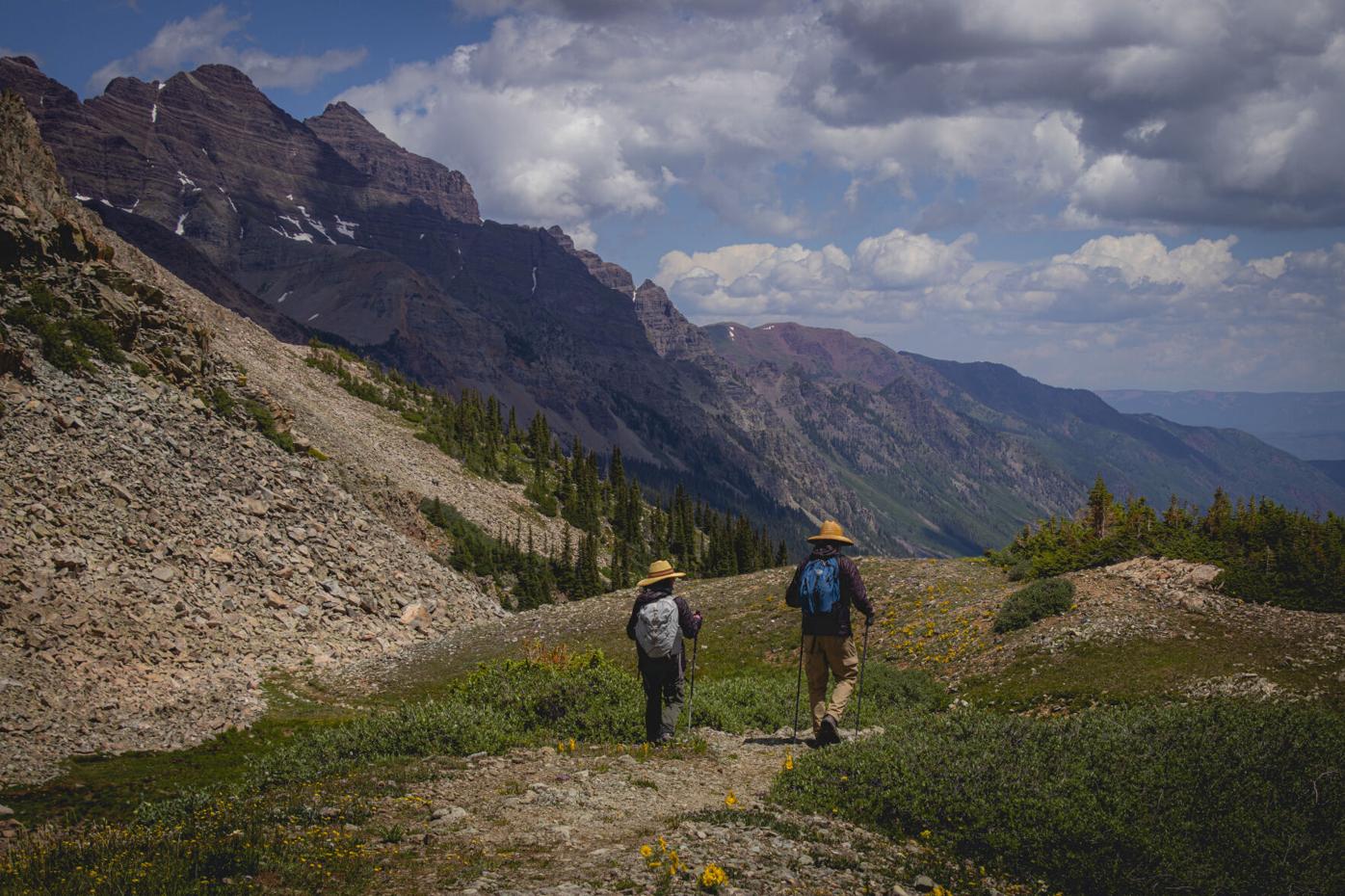From Colorado ski resorts, national parks to downtown business conferences, the state saw an influx of tourists over the last year.
Colorado had about 95.4 million visitors in 2024, up by 2.3% from the previous year, according to a new report from the Colorado Tourism Office released Tuesday.
The growth of more than two million tourists was primarily driven by day visitors, the report said. The most popular activities for overnight visitors were outdoor, entertainment, cultural and sporting related.
Traveler spending in the state grew by $100 million to $28.5 billion in 2024 and the industry added more than 4,000 jobs to the economy, according to the report citing data from Dean Runyan Associates and Longwoods International Travel USA.
“The 2024 impact numbers underscore the importance of Colorado’s tourism industry as a vital economic engine, fueling communities across the state and supporting over 188,000 jobs,” said Eve Lieberman, the state’s top economic development official in a news release. “A thriving tourism industry translates to strong local economies across Colorado.”
But Colorado’s tourism department also said the state’s tourism industry is facing pressures this year from an increase in competition and uncertainty caused by the Trump administration’s policies, based on preliminary 2025 data.
From data going through June, hotel occupancy in the state is down 2% so far. Hotel revenues have dropped by 2.7%.
And short-term rental occupancy declined 10% during the first quarter of 2025, the report said.
Colorado has been losing market share for tourism dollars over this current decade. The state recorded a high of 2.1% in 2019 and it fell to 1.8% in 2024.
let pathVariable;
let pathVariable2;
function handleUrlPathSegment() {
const fullPath = window.location.pathname.toLowerCase();
if (fullPath.includes(‘/business/’)) {
pathVariable = ‘business’;
pathVariable2 = ‘Business Newsletter’;
} else if (fullPath.includes(‘/outdoors/’) || fullPath.includes(‘/outdoor/’)) {
pathVariable = ‘outdoors’;
pathVariable2 = ‘Outdoors Newsletter’;
} else if (fullPath.includes(‘/opinion/’)) {
pathVariable = ‘opinion’;
pathVariable2 = ‘Opinion Newsletter’;
} else if (fullPath.includes(‘politics’)) {
pathVariable = ‘politics’;
pathVariable2 = ‘Politics Newsletter’;
} else if (fullPath.includes(‘outtherecolorado’)) {
pathVariable = ‘outtherecolorado’;
pathVariable2 = ‘Out There Colorado Newsletter’;
} else {
pathVariable = ‘am-update’;
pathVariable2 = ‘AM Update Newsletter’;
}
console.log(`Current path: ${fullPath}`);
console.log(`Path variable set to: ${pathVariable}`);
console.log(`Path variable 2 set to: ${pathVariable2}`);
applyNewsletterName(pathVariable2);
return { pathVariable, pathVariable2 };
}
function applyNewsletterName(newsletterName) {
if (document.readyState === ‘loading’) {
document.addEventListener(‘DOMContentLoaded’, function() {
updateNewsletterElement(newsletterName);
});
} else {
updateNewsletterElement(newsletterName);
}
}
function updateNewsletterElement(newsletterName) {
const newsletterElement = document.getElementById(‘newsletterName’);
if (newsletterElement) {
newsletterElement.textContent = newsletterName;
console.log(`Updated #newsletterName element with: ${newsletterName}`);
} else {
console.warn(‘Element with ID #newsletterName not found in the DOM’);
}
}
function setupFormSubmitListener() {
function getFormattedDate() {
const now = new Date();
const timestamp = now.getTime();
console.log(‘chris: Using Unix timestamp’);
console.log(‘chris: Current time:’, now);
console.log(‘chris: Unix timestamp (ms):’, timestamp);
return timestamp;
}
const formattedDate = getFormattedDate();
var profile = window.blueConicClient.profile.getProfile();
profile.setValues(‘newsletter_category’, pathVariable);
profile.setValue(‘newsletter_signup_date’, formattedDate);
window.blueConicClient.profile.updateProfile(this, function() {
});
}
handleUrlPathSegment();
setupFormSubmitListener();
Success! Thank you for subscribing to our newsletter.
function subscribeSuccess() {
var nsltrform = document.querySelector(“#nsltr”);
var nsltrSuccess = document.querySelector(“#successnsltr”);
nsltrform.classList.add(“hideblock”);
nsltrSuccess.classList.remove(“hideblock”);
}
function validateEmail(email) {
return String(email)
.toLowerCase()
.match(
/^(([^()[]\.,;:s@”]+(.[^()[]\.,;:s@”]+)*)|(“.+”))@(([[0-9]{1,3}.[0-9]{1,3}.[0-9]{1,3}.[0-9]{1,3}])|(([a-zA-Z-0-9]+.)+[a-zA-Z]{2,}))$/
);
}
function validateEmailAddress() {
const result = document.querySelector(“#result”);
const email = document.querySelector(“#email”).value;
result.innerText = “”;
if(validateEmail(email)) {
newsletterSubscribe(email);
} else {
result.innerText = ‘The email entered: ‘ + email + ‘ is not valid :(‘;
result.style.color = “red”;
}
return false;
}
function newsletterSubscribe(email) {
fetch(“https://services.gazette.com/mg2-newsletters.php?action=subscribe&site=denvergazette.com&emailPreferenceId=62&email=” + email, {
method: “POST”
}).then(res => {
console.log(“SUCCESSFUL POST”);
subscribeSuccess();
});
}
#nsltr {
min-width: 100%;
margin: 10px 0;
padding: 10px 20px;
background-color: #2076b3;
background-image: url(https://static.gazette.com/emails/circ/Audience%20Images/DG%20bus%20test%202.png);
background-size: cover;
}
#nsltr-header {
color: #fff4f4;
}
#nsltr-body {
text-align: center;
color: ;
}
#nsltr-button {
margin-top: 5px;
}
#successnsltr {
min-width: 100%;
margin: 10px 0;
padding: 10px 20px;
background-color: green;
text-align: center;
color: white;
}
#successnsltr a {
color: white;
}
.hideblock {
display:none;
}
h6 a {
color: black;
text-decoration: none;
padding: 5px;
background-color: #bbccdd;
font-weight: 600;
}
@media only screen and (min-width: 768px) {
#nsltr {
background-image: url(https://static.gazette.com/emails/circ/Audience%20Images/DG%20bus%20test%202.png);
background-size: cover;
}
}
The trend is also evident in Denver, which saw its post-pandemic tourism boom stagnate in 2024, according to Visit Denver’s similar annual analysis that was released last month.
Denver saw about 37 million domestic visitors in 2024 and generated $10.3 billion in tourism revenue, the city’s marketing and tourism agency found — remaining about the same as the year preceding it.
It’s a contrast to the three years before in Denver, when tourism not only recovered quickly but broke new records.
The growth of Denver’s tourism had to “plateau” eventually, Amir Eylon, president and CEO of Longwoods International, the travel consultancy firm that reports on both Colorado and Denver’s tourism industry, said last month.
Travelers have begun to pull back due to concerns about the economy and household debt rising, he explained.
The data from 2024 shows the strength and importance of tourism to Colorado’s economy, said Timothy Wolfe, director of the state’s tourism office, in a press release.
But the state’s tourism industry is expected to continue to see challenges as more travel destinations are vying to win the dollars of increasingly money-cautious tourists.
“However, we recognize that increased competition and uncertainty are impacting communities across our state in varied ways,” Wolfe said. “We are committed to bringing forward innovative ways to mitigate these changes while continuing to inspire the world to explore Colorado responsibly and respectfully.”





